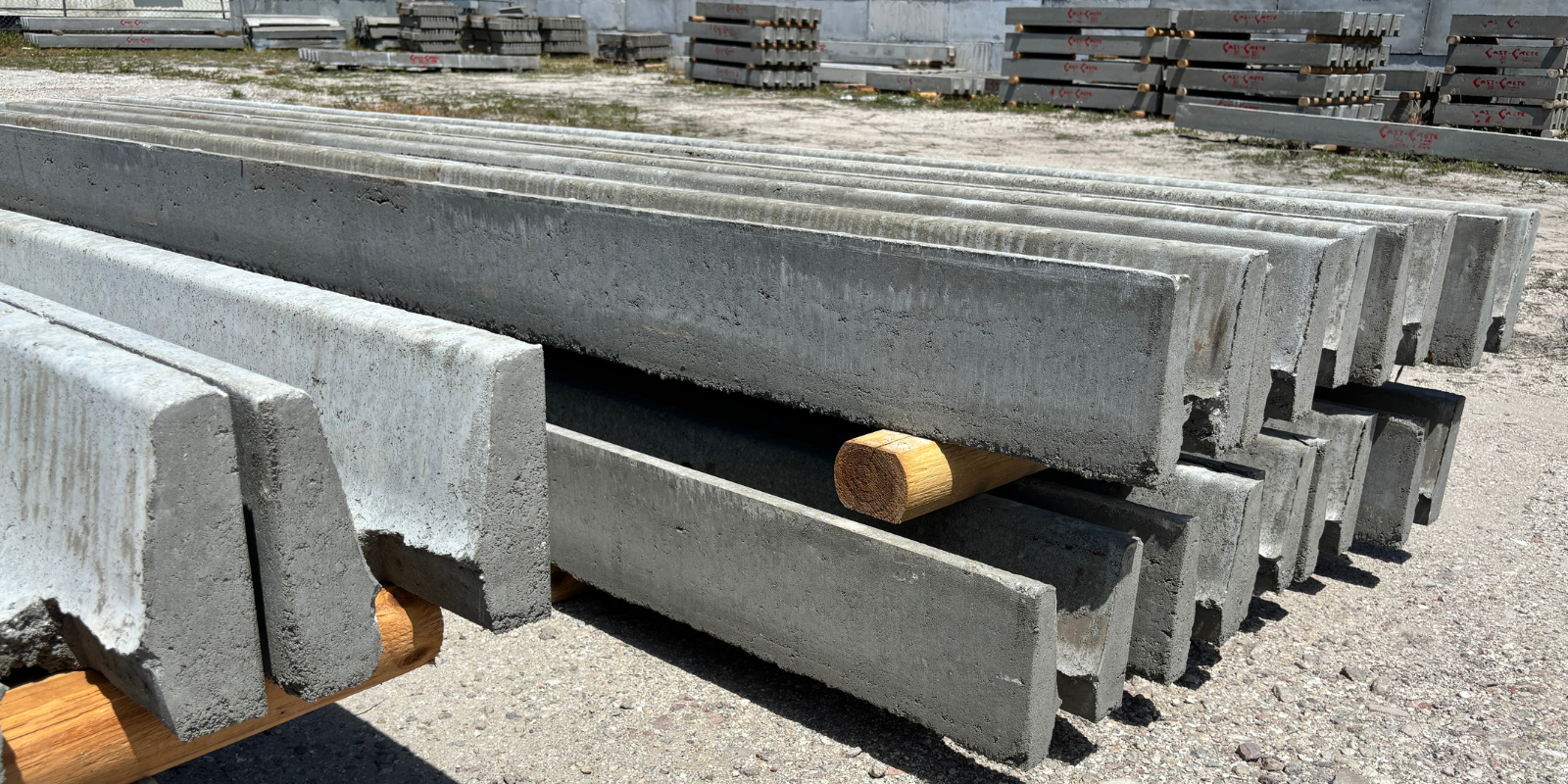Table of Contents
ToggleConcrete lintel in construction has been a vital element in the building industry for centuries, providing structural support and stability to various architectural designs.
In this blog post, we will take a deep dive into the history of concrete lintel, exploring its origins, evolution, and its role in contemporary construction projects.
From ancient civilizations to the modern era, concrete lintel has played a crucial role in shaping the way buildings are constructed and designed.
The Foundations of Concrete Lintel Use in Ancient Civilizations
The journey of concrete lintel in construction through the annals of history finds its roots in the innovative endeavors of ancient civilizations.
Among the pioneers, the Egyptians and Romans harnessed the rudimentary forms of concrete, a composite that would lay the groundwork for modern architecture.

These early adopters recognized the inherent strength and versatility of this material, incorporating it into their monumental structures, many of which defy the ages with their enduring presence.
In Egypt, the mastery over materials saw the integration of early forms of concrete lintels in their architectural marvels, an innovation aimed at supporting the colossal weight of their stone constructions.
This technique enabled them to achieve remarkable feats of engineering, such as vast roof spans across their temples, without compromising the structural integrity of the buildings.
Meanwhile, the Romans expanded on this foundation with their architectural ingenuity, introducing a concrete mixture that was not only more durable but also capable of setting under water.
This revolution in material science allowed for the construction of the famed Roman arches and the extensive network of aqueducts that epitomized Roman engineering excellence.
Their use of concrete lintel in construction became a cornerstone in the development of architectural designs that emphasized durability, functionality, and aesthetic appeal.
Through these ancient endeavors, the utility of concrete lintel was firmly established, setting a precedent for future generations to build upon.
The ingenuity of these early civilizations in leveraging concrete lintel underscored its significance in construction—a legacy that continues to influence contemporary building techniques.
Evolution and Innovation – The Middle Ages to the Industrial Revolution
As construction methods transitioned from ancient techniques to more refined processes, the period spanning the Middle Ages to the Industrial Revolution marked a significant era of evolution for concrete lintel.
This epoch saw the emergence of innovative approaches to building, driven by a necessity to support increasingly ambitious architectural endeavors.
The integration of iron reinforcement into concrete marked a pivotal development, introducing what would eventually be known as reinforced concrete.
This amalgamation not only enhanced the structural integrity of concrete lintels but also expanded their application possibilities, enabling the creation of larger, more complex structures.
The fusion of metal with concrete represented a convergence of old-world craftsmanship and nascent industrial technology, setting a new standard in construction materials.
During this time, the ability to mass-produce iron and later steel revolutionized building techniques, allowing for the prefabrication of lintels and other structural components.
This period of innovation laid the groundwork for the skyscrapers and expansive bridges characteristic of modern landscapes, demonstrating the enduring influence of advancements made during the Industrial Revolution on today’s construction practices.
The Modern Era – Advancements in Concrete Technology
In the contemporary landscape of construction, the field of concrete technology has seen transformative advancements that have significantly enhanced the performance and application of concrete lintel.
The introduction of high-strength concrete mixes has been a game-changer, offering superior durability and load-bearing capacity.
This new generation of concrete not only withstands the test of time but also accommodates the architectural demands of modern structures, enabling more ambitious and innovative building designs.
Furthermore, the advent of precast concrete lintel has streamlined the construction process, allowing for greater precision and efficiency.
This method involves casting concrete lintels in a controlled factory setting before transporting them to the construction site, ensuring consistent quality and reducing onsite labor requirements.
Such innovations have made concrete lintel more adaptable to various construction scenarios, from residential developments to grand commercial edifices.
The evolution in concrete technology underscores a commitment to enhancing material properties and optimizing construction methodologies.
These advancements have not only addressed the challenges of modern building projects but have also set new benchmarks in the construction industry, promising a future where the potential of concrete lintel continues to expand.
The Role of Concrete Lintel in Contemporary Construction Projects
In today’s dynamic construction landscape, concrete lintel remains an indispensable component, facilitating architectural flexibility and structural robustness across a myriad of projects.
Its application spans the spectrum of the industry, from facilitating the sleek lines of modern residential developments to bearing the substantial loads in towering commercial complexes.

Concrete lintel’s inherent versatility allows it to be seamlessly integrated into various architectural styles, supporting openings for windows and doors, while also serving a pivotal role in distributing loads effectively, ensuring the structural integrity of edifices.
The adaptability of concrete lintel in construction to the diverse requirements of contemporary building projects is further amplified by technological advancements.
These advancements have refined its properties, enabling it to support increasingly wider spans and heavier loads, a necessity in today’s ambitious construction projects.
Moreover, its compatibility with modern building techniques and materials enhances its utility, making it a preferred choice among builders and architects striving for efficiency and durability in their designs.
Incorporating concrete lintel into a project demands meticulous engineering and design considerations, ensuring that it not only meets the aesthetic requirements of the structure but also adheres to stringent building codes and standards.
The role of concrete lintel extends beyond mere structural support; it is a testament to the evolution of construction techniques, embodying the blend of historical significance and cutting-edge technology that characterizes the contemporary construction sector.
Overcoming Challenges – Finding Reliable Masonry Stores and High-Quality Materials
Navigating the complexities of securing reliable concrete block and lintel suppliers and procuring high-quality materials like cement and rebar, is a pivotal concern for those involved in the construction industry.
When it comes to incorporating concrete lintel in construction projects, the stakes are especially high due to its critical role in ensuring structural integrity and durability.
To mitigate risks and uphold standards, rigorous vetting of suppliers becomes indispensable.
Engaging in thorough research, seeking recommendations from industry peers, and reviewing past projects can illuminate a supplier’s reliability and quality commitment.
Furthermore, emphasizing transparent communication with suppliers of precast lintel about specific material specifications and compliance requirements is essential.
This proactive approach aids in aligning expectations and facilitates the smooth integration of top-tier concrete lintel into construction endeavors.
Additionally, cultivating strong relationships with construction materials suppliers can lead to beneficial partnerships, offering insights into innovative materials and emerging technologies in concrete lintel.
By prioritizing these strategies, construction professionals can adeptly manage the challenge of sourcing the right materials, ensuring their projects are not only structurally sound but also reflective of high-quality craftsmanship.
Concrete Lintel in Construction: How to Manage Large-Scale Projects
When integrating concrete lintel into large-scale construction projects, the coordination and oversight of various operational facets become paramount.
Project managers face the task of synchronizing the supply chain, ensuring timely delivery of materials while avoiding project delays.
This involves a meticulous alignment of procurement timelines with the project’s overall schedule, a challenge magnified in the scale of such undertakings.
One crucial aspect is the collaboration with engineering teams to design and calculate the precise specifications of concrete lintel required.
This step is critical not only for structural integrity but also for economic efficiency, preventing overuse of materials or underestimating load-bearing needs.

Furthermore, project managers must oversee the skilled installation of concrete lintel, a process that demands attention to detail and adherence to safety standards.
This includes coordinating with construction teams to facilitate training on the latest installation techniques and ensuring compliance with building codes.
Another layer of complexity is introduced by the need to anticipate and mitigate potential disruptions.
This could range from supply chain issues to unexpected structural challenges during installation.
Proactive problem-solving and flexibility in construction project management are thus essential tools in the successful incorporation of concrete lintel into large construction efforts, ensuring that projects progress smoothly and meet their envisioned structural and aesthetic goals.
The Future of Concrete Lintel in Construction
As we peer into the horizon of construction’s future, concrete lintel stands poised at the forefront of significant evolution.
The relentless pursuit of innovation within material science and engineering disciplines promises the development of next-generation concrete lintels that will redefine the boundaries of structural capabilities and sustainability.
The advent of ultra-high-performance concrete (UHPC) and the integration of smart materials into lintels are on the cusp of offering unprecedented strength and durability, alongside the ability to monitor the health of structures in real-time.
Environmental sustainability will play a pivotal role in guiding these advancements, driving the industry towards the adoption of green manufacturing processes and the utilization of recycled materials in concrete production.
This shift not only aims to reduce the carbon footprint associated with construction materials but also enhances the lifecycle efficiency of projects by extending the durability and resilience of concrete lintel components.
Moreover, the digital transformation of construction practices, including the use of Building Information Modeling (BIM) and 3D printing technologies, will facilitate more precise and efficient fabrication of concrete lintels, tailored to meet specific architectural demands while minimizing waste.
In essence, the future of concrete lintel in construction is intertwined with the dual objectives of technological advancement and environmental stewardship, heralding a new era of building that prioritizes both innovation and sustainability.

